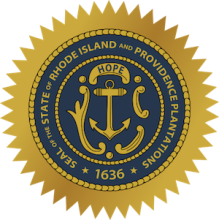
Fast, affordable Internet access for all.

Eight strands of publicly available fiber optic cable made landfall on Block Island, Rhode Island this month, opening the door to Fiber-to-the-Premise (FTTP) for local businesses and residents. Local officials are moving forward with a once in a multi-generational opportunity to share an underwater cable with Deepwater Wind and National Grid. The energy companies are laying lines to the nearby Block Island Wind Farm.
A Brief History of Eight Strands of Fiber
The island is home to only one municipality, New Shoreham, which covers the entire land mass. Block Island residents have struggled with poor utilities for more than a century. Located about 12 miles off the Rhode Island coast, the island has never been connected to the mainland electrical grid or Internet backhaul network. As a result, the town of about 1,000 year-round residents has reported the highest energy costs outside of Alaska and dismal Internet speeds of 2 Megabits per second (Mbps) or slower download and upload speeds that are even more lethargic.
Local residents have put up with unreliable DSL Internet access from incumbent provider Verizon; it delivers service via microwave antennae. The island’s lack of bandwidth was the talk of the town in 2014 when up to 20,000 tourists flooded the network during the summer months:
Taking Advantage of the Sea Breeze
The first U.S. offshore wind farm is changing all of that. Eight years ago, Deepwater Wind and National Grid envisioned the five turbine pilot program they named the Block Island Wind Farm. Local officials convinced National Grid to include a mainland Internet connection in its undersea cable. Block Island Times reported on their success in 2012,
“Deepwater will lay the cable at no cost to the town. At each end of the fiber optic cable, it would be the town’s responsibility to negotiate with a telecommunications service provider – be it Verizon, currently under fire for its DSL speeds here, or another provider.”
Options on the Horizon
The local government decided to move forward without Verizon. They hired a consultant in 2012 to advise the island on how to construct a publicly owned broadband network that will benefit future generations on Block Island.
After a feasibility study in 2015, the town issued an RFI for potential partners - Internet service providers (ISPs) to operate a publicly owned network and potentially to build it. Earlier this year, the town narrowed down its options to two models under either GWI or Crocker Communications. From the RFI response memo:
“Under both these models, the Town builds the complete (FTTP) network infrastructure, as well as the interconnection on the mainland from the National Grid cable to a negotiated point of presence for the selected provider. The Town is responsible for the fiber cable, electronics, real estate and structures. [The Town] received no responses under which the vendor would build a fiber network.”
Solving The Island Issue
Block Island’s history is not unique - island communities often struggle to attract investment from larger ISPs as they are remote, sparsely populated, and often hilly. Islesboro, Maine, and Doe Bay, Washington, both suffered with unreliable, frustrating Internet connections and decided to take matters into their own hands. Islesboro’s 566 residents voted recently to bond and will build a gigabit FTTH network. Doe Bay became a self-reliant community with a fixed wireless system built and operated by its own residents.
Early projections estimate a $4.3 million expense for Block Island’s network. Local residents are set to vote on bonding specifics at a town financial meeting later this summer.
With the wind farm scheduled to be operational before the end of 2016 and the fiber network to be connected in early 2018, Block Island has taken massive steps towards a better future for its residents. They’ll be among the first communities in the world to power themselves with wind energy and own a next-generation fiber-optic network.
